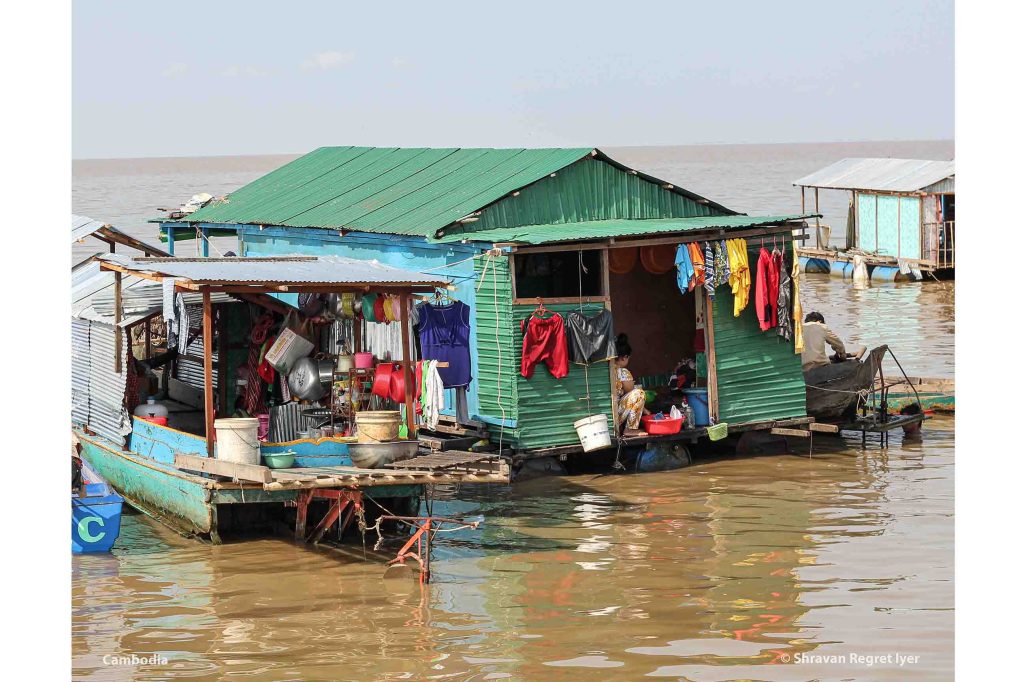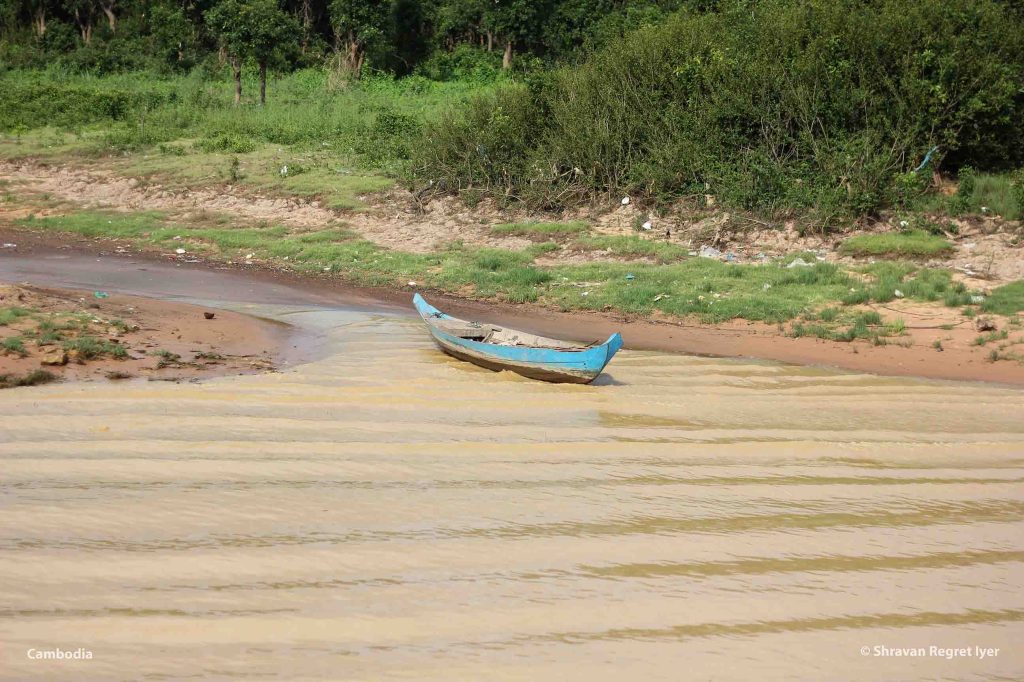
Speaking of water, did you know Tonlé Sap commonly translated as ‘great lake’ that connects the lake to the Mekong River is home to many ethnic Vietnamese and numerous Cham communities, living in floating villages around the lake?
These floating villages are self-contained units where each house is electrified using diesel transported by boats. These villages include floating groceries stores, schools, temples/churches, hospitals, etc.
According to a New York Times report, about 1.2 million people living in the greater Tonlé Sap make their living by fishing the local waters – which has unique hydrology that makes it one of the most fertile ecosystems on the planet.
In terms of the history of these floating villages, no one knows exactly when the first one appeared in Cambodia. The French naturalist Henri Mouhot — who “discovered” Angkor Wat in the 1850s, although it had never been lost to locals — found in Phnom Penh a floating population of 20,000, more than twice as many as living on land.
Today, the great lake and its surrounding ecosystems are witnessing increased deforestation, infrastructure development, and climate change in recent years.
Join me in this virtual journey “This is Cambodia – All New Visual Series 2021”
Follow Shravan Regret Iyer’s Project 3 Lenses on Facebook
@shravanregretiyer3lenses @regretiyerproductions
Visit: https://shravanregretiyer.com for more stories from the natural world.








